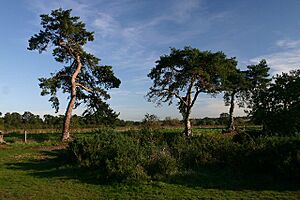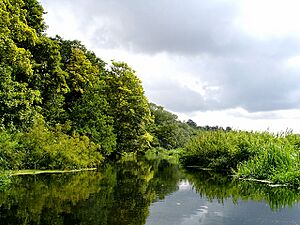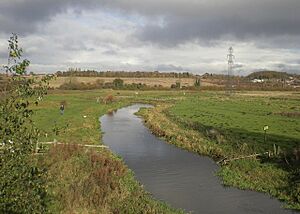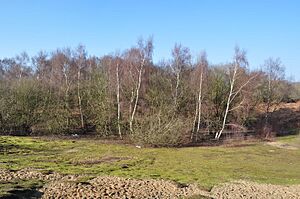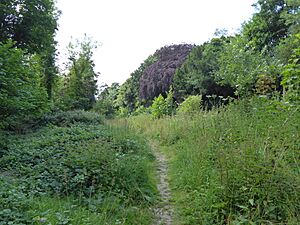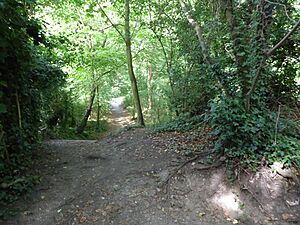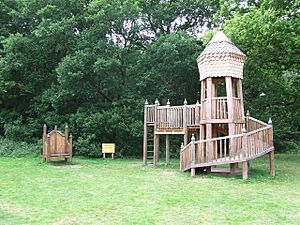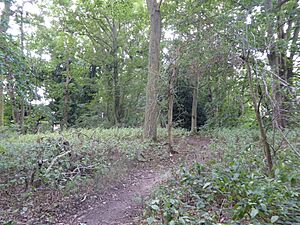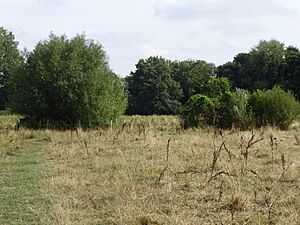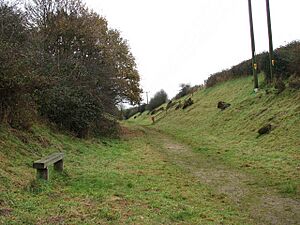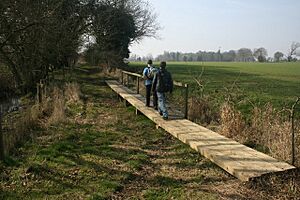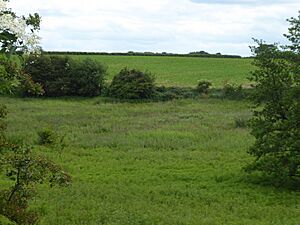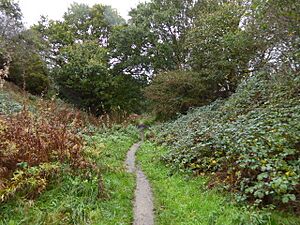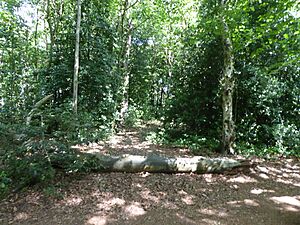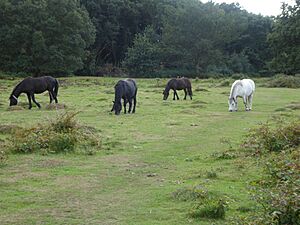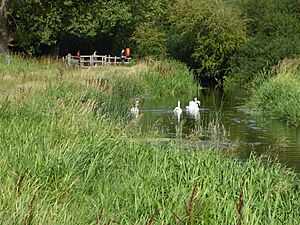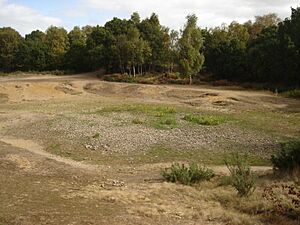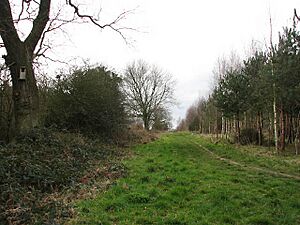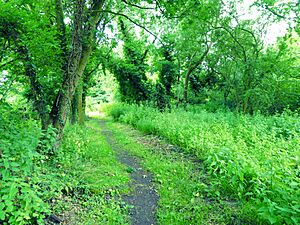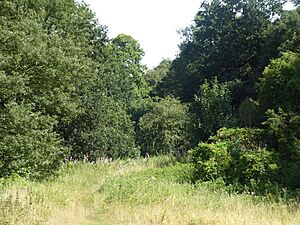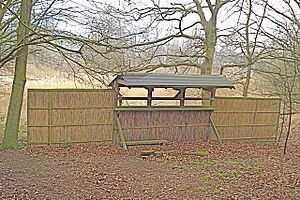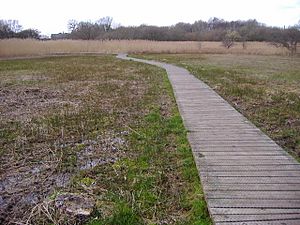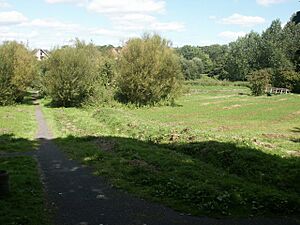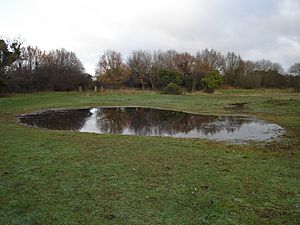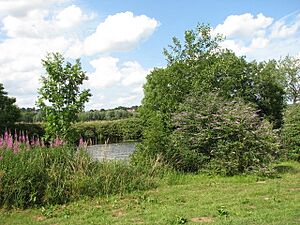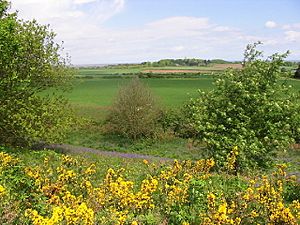List of local nature reserves in Norfolk facts for kids
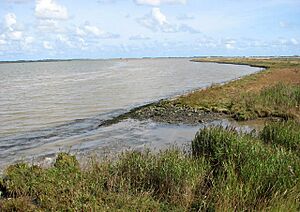
Norfolk is a county in East Anglia, a region in eastern England. It covers about 5,377 square kilometers (2,074 square miles) and had nearly 900,000 people living there in 2017. The county is managed by Norfolk County Council and seven smaller local councils. Norfolk shares borders with Cambridgeshire, Suffolk, Lincolnshire, and the North Sea.
Local Nature Reserves (LNRs) are special places protected by local councils under a law from 1949. To become an LNR, the local council must own the land, lease it, or have an agreement with the owner. These reserves are important because they have unique plants, animals, or interesting geology. Local councils are responsible for looking after them and can make rules to protect them. As of October 2018, Norfolk had 27 LNRs. Many of these sites also have other important protections, like being a Site of Special Scientific Interest (SSSI) or a Special Area of Conservation (SAC).
Contents
- What are Local Nature Reserves?
- Norfolk's Special Nature Spots
- Barnham Cross Common
- Bath Hills
- Bowthorpe Marsh
- Breydon Water
- Broome Heath
- Brundall Church Fen
- Danby Wood
- Dunston Common
- Earlham Park Woods
- Eaton Common
- Felmingham Cutting
- Great Eastern Pingo Trail
- Hindringham Meadows
- Knapton Cutting
- Lion Wood
- Litcham Common
- Marston Marshes
- Mousehold Heath
- Pigney's Wood
- Roydon Fen
- Smockmill Common
- South Walsham Fen
- Southrepps Common
- Toll's Meadow, Wymondham
- Wensum Valley
- Whitlingham Marsh
- Wiveton Down
- See also
- Images for kids
What are Local Nature Reserves?
Local Nature Reserves are areas that are important for nature right where people live. They are often close to towns and cities, making them easy for everyone to visit and enjoy. These places help protect different kinds of habitats, like woodlands, grasslands, and wetlands.
Why are LNRs important?
LNRs are super important for several reasons:
- Protecting Wildlife: They provide safe homes for many different plants and animals, including some rare ones.
- Education: They are great places for schools and families to learn about nature and the environment.
- Enjoyment: People can visit LNRs for walks, birdwatching, or just to relax in nature.
- Local Control: Local councils can make sure these areas are managed in a way that benefits both nature and the community.
Norfolk's Special Nature Spots
Norfolk is home to many amazing Local Nature Reserves. Each one has its own unique features and wildlife. Let's explore some of them!
Barnham Cross Common
Located in Thetford, this common is a mix of grassland and heathland. It's bursting with different plants, including some that are rare in the UK. You can find almost 100 types of birds here, with 60 species choosing it as their breeding ground. It's also home to many insects and other small creatures. This site is also a Special Area of Conservation (SAC), a Special Protection Area (SPA), and a Site of Special Scientific Interest (SSSI).
Bath Hills
Near Bungay, Bath Hills is on the sunny, sheltered side of a steep valley. Because of this, spring flowers bloom here very early in the year, making it a beautiful spot to visit.
Bowthorpe Marsh
This reserve is next to the River Yare in Norwich. It has untouched grasslands, tall fen (a type of marshy land), a pond that fills up with water at certain times of the year, and drainage ditches. You can find water plants like reed sweet-grass growing here.
Breydon Water
Found near Great Yarmouth, Breydon Water is a large inland tidal estuary. When the tide is low, huge areas of mud are exposed. This mud provides a lot of food for migrating birds and wading birds that spend the winter here. It's especially important for several types of wintering wildfowl, including some rare species. This site is also a Ramsar site (an internationally important wetland), a Special Protection Area (SPA), and a Site of Special Scientific Interest (SSSI).
Broome Heath
Also near Bungay, this site is in the valley of the River Waveney. It features marshy grazing land and lakes. It's not just about nature; it also has historical importance! At the southern end, there are signs of a Neolithic settlement (from the Stone Age), and in the middle, you can see ancient long and round burial mounds. This site is a Scheduled monument (SM) and a Site of Special Scientific Interest (SSSI).
Brundall Church Fen
This area used to be a grazing marsh. Today, you might spot animals like water voles, foxes, and Chinese water deer. Sometimes, otters even visit this reserve.
Danby Wood
Danby Wood in Norwich is a natural woodland on what used to be a chalk mine. This means it has many interesting hills, hollows, and banks. You'll find broadleaved trees like oaks, limes, sycamores, and even a couple of walnut trees.
Dunston Common
Most of Dunston Common, near Norwich, is grassland with lovely wildflowers such as lady's bedstraw, harebell, and sheep's sorrel. There's also a small area of younger woodland at the western end.
Earlham Park Woods
These woods are on the edge of Earlham Park in Norwich. You can see elm trees growing back here. Other parts of the reserve include tall marsh, natural grassland, and a pond that has become filled with silt over time.
Eaton Common
Located on the bank of the River Yare in Norwich, Eaton Common is mostly grassland, with some marshy areas. There are also small patches of broadleaved woodland and tall herbs.
Felmingham Cutting
This railway cutting, near Norwich, used to be part of the Midland and Great Northern Railway line. Now, it's part of the Weavers Way long-distance footpath. It's a fantastic place for butterflies, with sixteen different species breeding here.
Great Eastern Pingo Trail
Near Thetford, this site is famous for its around 300 "pingos." Pingos are shallow pools that formed when ice melted at the end of the last ice age. The reserve has a mix of different habitats, including a large lake called Thompson Water at its western end. It's a Nature Conservation Review (NCR) site, managed by the Norfolk Wildlife Trust (NWT), and is also a Special Area of Conservation (SAC), a Special Protection Area (SPA), and a Site of Special Scientific Interest (SSSI).
Hindringham Meadows
This site is located near Fakenham.
Knapton Cutting
Knapton Cutting is a footpath that goes from Knapton to North Walsham, following an old railway line. A small part of it at the northern end is a Local Nature Reserve, known as Knapton Cutting Butterfly Reserve. It has many different flowering plants, including the small-flowered catchfly, which is an endangered plant in Britain.
Lion Wood
About a third of Lion Wood in Norwich is thought to be very old woodland. The main trees are oak and sycamore. You can also spot many woodland birds here, like blackcaps and green and greater spotted woodpeckers.
Litcham Common
This heathland site near King's Lynn has areas of acid grassland, wet and dry heath, scrub, and old oak and birch woodland.
Marston Marshes
Located in the flood plain of the River Yare in Norwich, Marston Marshes has marshes, fen, ditches, scrub, wet woodland, dry grassland, and five ponds. You can find plants like ragged robin and southern marsh orchid here. It's also home to many invertebrates, including the rare Desmoulin's whorl snail.
Mousehold Heath
Mousehold Heath in Norwich is a small part of what used to be a much larger heath. It has different habitats, including woodland, a pond, scrub, and acid grassland. You can see woodland birds like song thrushes and great spotted woodpeckers. This site is a Geological Conservation Review (GCR) site and a Site of Special Scientific Interest (SSSI).
Pigney's Wood
This wood near North Walsham has 40 different types of trees. Most of them were planted after 1993, but there's one oak tree that's an amazing 450 years old! The wood is also home to many birds, butterflies, and dragonflies. You might even see mammals like otters, water voles, and badgers. It is managed by the Norfolk Wildlife Trust (NWT).
Roydon Fen
Near Diss, this site was once covered by wet woodland. However, the Suffolk Wildlife Trust (SWT) has worked to restore the eastern part to fen by mowing it. Now, it has many typical fen plants like marsh helleborine, marsh fragrant orchid, and sawsedge.
Smockmill Common
This common, near Norwich, is next to the River Tas. It has fen along the river bank, and woodland and grassland in other areas. The variety of plants here is very rich.
South Walsham Fen
This nature reserve near Norwich has semi-improved grassland and hedges full of different plant species, which mark an old track. There are also areas of bracken and old woodland.
Southrepps Common
This common, near Norwich, features damp grassland and fen in the valley of the River Ant. It's special because it has several rare true flies that live in undisturbed wetlands. Two examples are Pteromicra glabricula and Colobaea distincta, whose larvae are parasites on snails. This site is a Special Area of Conservation (SAC) and a Site of Special Scientific Interest (SSSI).
Toll's Meadow, Wymondham
The River Tiffey flows through this site in Wymondham. It has wet meadows and woodland. You can find many small birds here, and mammals like muntjac and roe deer, bank voles, and common shrews.
Wensum Valley
This site in Norwich is made up of two connected areas. Mile Cross Marsh has damp grassland and fen. Sycamore Crescent is a narrow strip of old oak and beech woodland, with smaller elm and sycamore trees growing beneath them.
Whitlingham Marsh
Most of this site, on the southern bank of the River Yare in Norwich, is covered in reed beds. These reeds are home to many different dragonflies. You might also see Chinese water deer browsing in the marsh.
Wiveton Down
Near Holt, Wiveton Down is a great example of an esker. An esker is a long, winding ridge formed when a glacial crevasse (a crack in a glacier) filled with sand and gravel. It's been very important for teaching and research about geology. This site is also a Site of Special Scientific Interest (SSSI).
See also
- List of Sites of Special Scientific Interest in Norfolk
- Norfolk Wildlife Trust
Images for kids


